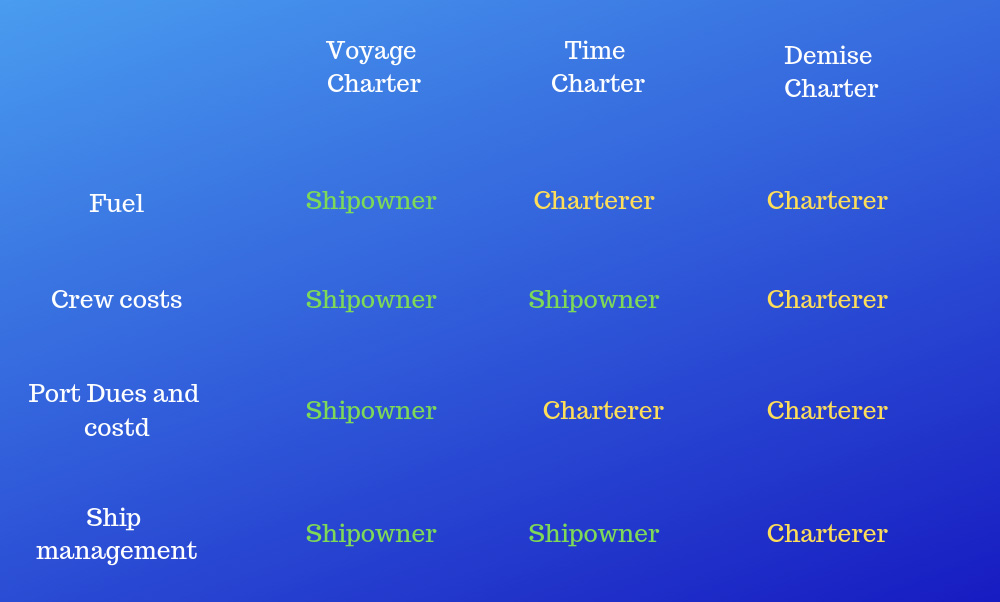The operations of seagoing bulk carrier ships was fraught with risks. It is important to plan your trip carefully and be careful in all shipboard issues. This website is an easy reference for the international shipping professionals with guidelines as well as information regarding the loading and discharge of various bulk cargo types . It is to stay within the limits that are set by the classification society. It is essential to reduce the chance of stressing vessel's structure and follow the safety rules for the safety of sea travel. There are a wealth of information on bulk carrier topics in our detail pages, both for those working at sea and those ashore.
The general characteristics of bulk seagoing vessels
Bulk carriers, also known as single-deck vessels with top-side tanks, or hopper side tanks in cargo spaces, are made to transport bulk cargo from a single commodity. Solid bulk cargo is any material, other than gas or liquid comprised of granules, particles, or any other large piece of material, generally homogenous in composition. It is loaded directly into the cargo areas of ships with no immediate confinement. Dry cargo includes sugar, grain and bulk ores. Bulk carriers can be defined as any ship designed primarily to carry liquid or solid cargo in bulk. Tankers can also be included. The term is used primarily to describe ships that carry solid bulk cargos. This would include grains as well as other agricultural products. Check out this bulk carriers url for more.

What Is Bulk Carrier?
"A ship which is intended primarily to carry dry cargo in bulk, including such types as ore carriers and combination carriers"
Carrying capacities range between 3,000 and 300,000.
-Average speed 12 15 knots
-Single deck ships, ie no tweendecks
Small to medium-sized bulk carriers that carry capacities of up to 40,000 tons come with cargo handling gear. Larger vessels have docks for loading and unloading.
-Cargo hold dimensions are generally big with no obstructions. They also come with larger hatches that enable easy loading and unloading.
The bulk carriers typically have one ballast hold. This is a possibility to use during ballast voyages to enhance stability. Additional holds can be permitted to allow partial ballasting, however only when in port.
They are able to be used as single-pull or hydraulic covers, or stacking (piggy back) steel hatch covers.
-Quatre types de ballast tanks
Sloping topside wing tanks
Sloping bottom side of wing tank
Double bottom tanks
Peak and after-peak ballast water tank.
Solid bulk cargo? Any material, other than gas or liquid, made up of a mix of particles, granules , or any larger pieces of material, generally of uniform composition and loaded directly into the cargo space without any intermediary form of containment. You must ensure that all cargoes are ready to be loaded, regardless of whether they are "clean" or "dirty", and that there isn't any contamination. In order to load the cargo, it is important to clean the area properly. A surveyor may be needed to mark the space as ready for loading. To ensure that contamination does not occur it is essential that any residue left behind from a previous cargo are removed. The bulk cargo is the most vulnerable to water damage. This means that the holds must be dry in order for cargo to be received. Furthermore, hatch covers must also be watertight and sealed if required to stop water from entering. All fittings inside the hold (pipe guards and the bilge covers, etc.) must be inspected. It is recommended to inspect each fitting in the hold (ladders,pipe guards,bilge covers...) to ensure that they're in good functioning order. The equipment could cause severe delay and damage to conveyor belt systems. Inadvertent discharge of cargo will cause the ship to be found to be responsible. Have a look at this supramax bulk carrier specialist for more.
[img]https://images-global.nhst.tech/image/UmZsUzJqUEdHbS93dmJRdW55ZlNyditXdXNLaHQxNERRM255czk3cEpkYz0\u003d/nhst/binary/50a8cfadd4ed1fa3873e7ddde2473e7f[/img]
Bulk Carrier, Bulker? Bulk Carrier, Bulker? A vessel that can transport dry cargo. It is not intended to be a liquid bulk tanker or carrier. Traditional bulk carriers are equipped with a single deck with single skin, double-bottom topside and hopper side tanks. Bulk carriers are able to load any type or bulk cargo that is light or heavy grain, up to the maximum weight they can carry. The loading, transportation and discharge of bulk dry cargo are not as straightforward or simple as people imagine.
Carrier for bulk material without equipment
A lot of bulk cargoes have dangerous properties, and they can alter their properties during transit. The ship may be damaged due to improper loading e.g. The ship may bend when it is loaded to the maximum forward holding. This is known as stress. If the weather is bad, this can cause serious problems at sea. Last cargoes could also be negatively affected by residues of previous cargoes. Some bulk cargoes are vulnerable to damage from water. cement power. It can be challenging to estimate the amount of weight and volume of cargo that are being loaded or being unloaded. All of these factors could have dire consequences for the safety of bulk cargo transport. Discharging bulk cargo using? Bulk cargoes are prone to create a cone when they are loaded onto conveyor belts. The angle at which the cone creates is known as the angle, or repose'. It varies for each cargo. For iron ore, cargoes are likely to form a steep angled cone, while cargoes which flow freely will form an angled cone that is shallow. A cargo that has a low angle of repose is at risk of potential to shift during passage. In some cases the use of bulldozers is needed to spread the load over the sides of the holds in the event that the cargo is about to be completed. Dry-bulk carriers depend on shoreside facilities for discharge and loading of cargo. However, bulk carriers may offer self-unloading with conveyors beneath the cargo holds or on decks.

